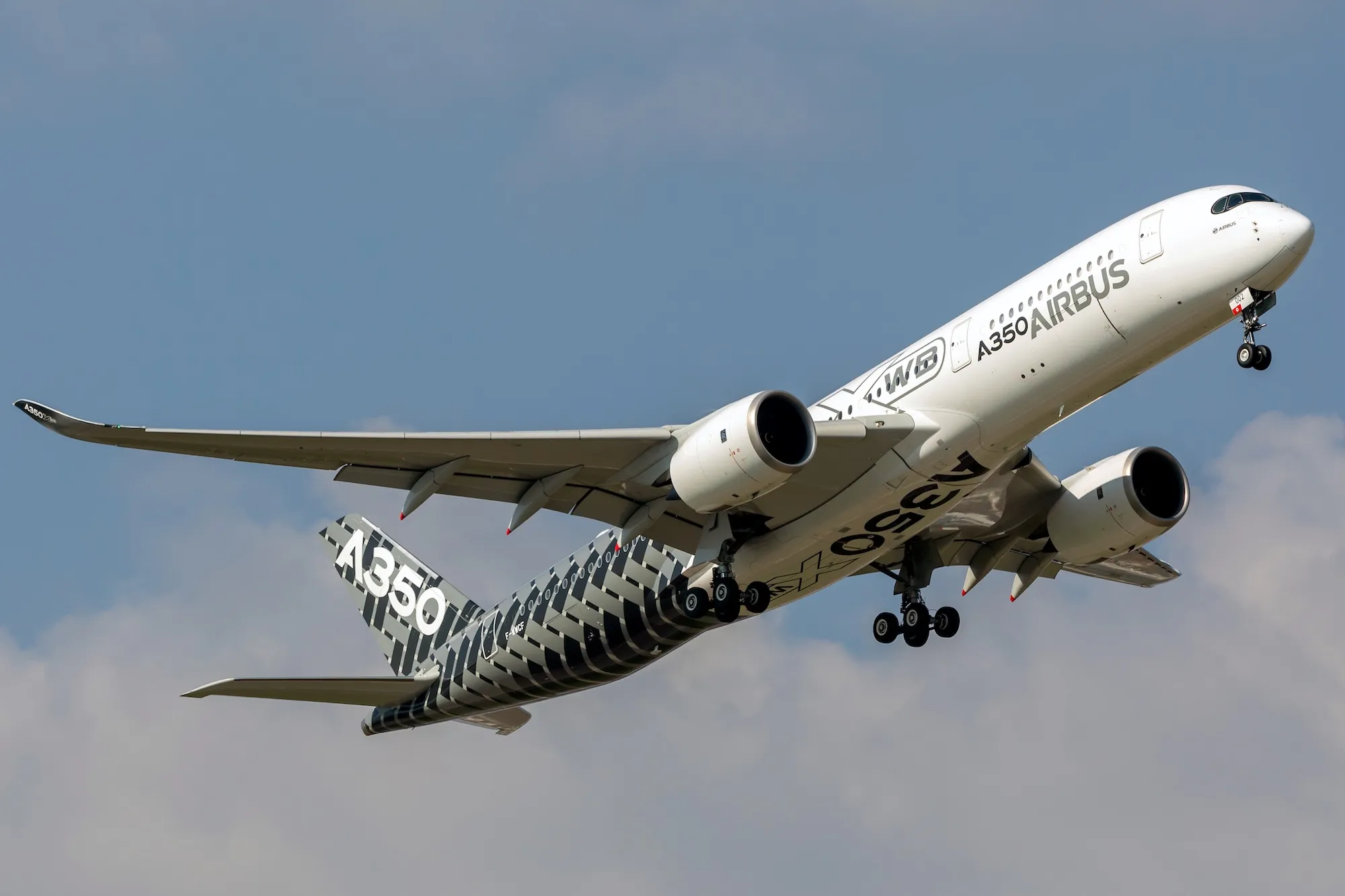AMSTERDAM — Airbus wrapped up the first half of 2025 with stronger earnings and a firm backlog, but delivery delays and engine supply issues continue to weigh down performance.
While the aerospace giant is keeping its full-year targets in place, it admits that better execution is needed going forward, especially with dozens of jets still grounded, waiting on engines.
The company reported revenues of €29.6 billion (US$32.3 billion), a 3% rise from the same time last year. Adjusted EBIT came in at €2.2 billion (US$2.4 billion), up 58% year-on-year. Net income climbed to €1.5 billion (US$1.63 billion), nearly doubling from H1 2024. Financially, Airbus is clearly holding steady, even with a few rough patches still showing.
Deliveries Drop, Mostly Due to Engine Delays
Airbus delivered 306 aircraft between January and June 2025, down from 323 deliveries in the same period last year. While demand hasn’t gone anywhere, engine supply problems continue to slow handovers.
About 60 aircraft are sitting completed but undelivered, largely because engines didn’t arrive in time. These include A320neo and A220 jets, with both Pratt & Whitney and CFM still dealing with production and quality issues.
That’s also affected cash flow in a big way. Airbus reported negative free cash flow of €1.6 billion (US$1.74 billion), compared to a positive €2 billion (US$2.18 billion) last year. Inventory costs and work-in-progress aircraft are tying up more capital than planned.
Orders Stay Strong, Backlog Keeps Growing
Despite slower deliveries, airlines aren’t backing off. The company booked 494 gross commercial orders, landing at 402 net after accounting for cancellations. That’s up from 310 net orders in H1 2024.
The total backlog hit 8,754 aircraft by the end of June, including strong demand for A321neos and A350s. Carriers in Asia and the Middle East continue to drive growth, and widebody interest seems to be creeping back.
Helicopters, Defence & Space Bring In Steady Gains
Not all of Airbus’s progress is tied to airliners. Its helicopter division saw revenues rise to €3.7 billion (US$4.03 billion), with 138 units delivered (up from 124 last year). Adjusted EBIT grew to €249 million (US$271 million), helped by support contracts and increased demand from civil and parapublic buyers.
The Defence and Space segment also bounced back, pulling in €5.8 billion (US$6.32 billion) in revenue, up by 17%, and delivering an Adjusted EBIT of €265 million (US$288 million). Last year, this unit posted a steep loss, so this year’s turnaround gives Airbus a bit more balance.
Spirit Aero Deal Moves Ahead, EU–US Tariff Easing Helps
Airbus confirmed it’s on track to close its Spirit AeroSystems acquisition later this year. The deal is expected to bring more control over fuselage and structural parts, especially as supply chain pressures remain tight.
In parallel, the recently signed EU–US zero-tariff agreement is being welcomed by the company. Lower trade barriers on civil aircraft parts could smooth out logistics and cost issues for Airbus’s U.S. operations in places like Mobile, Alabama.
Outlook for 2025: Targets Stay the Same, but Pressure Builds
Despite delivery shortfalls, Airbus has reaffirmed its 2025 guidance:
- 820 aircraft deliveries
- Around €7 billion (US$7.63 billion) in Adjusted EBIT
- Free cash flow before customer financing of ~€4.5 billion (US$4.9 billion)
The company made it clear: targets aren’t changing, but H2 execution will be key. If engine makers catch up and logistics smooth out, there’s a good chance Airbus can close the year as planned. But the pressure’s real.
CEO Guillaume Faury called it “a solid first half” but admitted “we need to focus on improving deliveries and cash flow in the second half.”
Final Thoughts
So, Airbus is still in a strong place overall. Profit’s up, demand is there, and the backlog is huge. However, the supply chain, particularly in the engine sector, is hindering their ability to operate at full speed. A few too many aircraft are stuck on the ground, ready but not quite able to fly.
If the second half sees smoother coordination between Airbus and its engine suppliers, the company could still end 2025 on a high. But for now, they’re flying a strong route, with a bit of turbulence still to clear.
Stay tuned and keep following Airways. Follow us on LinkedIn and Instagram for the latest updates.



.webp)
